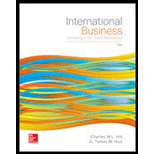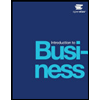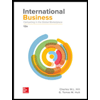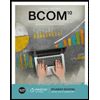
Case summary: The case investigates the incredible development of Country I's pharmaceutical industry. Over the previous decade, pharmaceutical exports from Country I have increased going from just $1 billion in the year 2000 to nearly $30 billion during the period 2012-2013. This development can be credited to the choice by numerous western firms to subcontract their manufacturing to the nation. Country I’s organizations quit delivering fake products. Secure in the learning that their licenses would be regarded; outside organizations began to work with their Country I’s partners. For Country I, the outcome has been emotional development in its pharmaceutical division. Country I, with its generally minimal effort work, huge pool of English talking researchers and labourers, and learning of Country U also, Country E drug regulations is an appealing production area for western firms. Most financial analysts worried about impact of cash trade and incentives to upgrade market development by WTO acknowledgment at Country I, particularly of Country U’s pharmaceutical market intensely managed by Federal Drug Agency (FDA), controlling substances and its impact on Country U customers. In this manner, improvement in Country I brought new open doors for Country U pharmaceutical organizations, representatives at Country I and generally Country U customers permitting to profit by medicines created at the lower research and development costs.
Characters in the case: Country I, Country U Country E.
To Discuss: The ways in which Country U’s pharmaceutical companies and Country U’s consumers benefit from the rise of Country I’s pharmaceutical industry.
Introduction: A pharmaceutical organization, or drug organization, is a business authorized to investigate, create, advertise as well as disseminate drugs, most normally with regards to human services.
Want to see the full answer?
Check out a sample textbook solution
Chapter IC Solutions
International Business: Competing in the Global Marketplace
- Nobel Corp. uses a predetermined overhead rate based on direct labor cost to apply manufacturing overhead to jobs. For the year ended December 31, Nobel's estimated manufacturing overhead was $800,000, based on an estimated volume of 40,000 direct labor hours, at a direct labor rate of $8.00 per hour. Actual manufacturing overhead amounted to $850,000, with an actual direct labor cost of $360,000. For the year, what was manufacturing overhead?arrow_forward??!!arrow_forwardTutor provide correct answerarrow_forward
 BUSN 11 Introduction to Business Student EditionBusinessISBN:9781337407137Author:KellyPublisher:Cengage Learning
BUSN 11 Introduction to Business Student EditionBusinessISBN:9781337407137Author:KellyPublisher:Cengage Learning Essentials of Business Communication (MindTap Cou...BusinessISBN:9781337386494Author:Mary Ellen Guffey, Dana LoewyPublisher:Cengage Learning
Essentials of Business Communication (MindTap Cou...BusinessISBN:9781337386494Author:Mary Ellen Guffey, Dana LoewyPublisher:Cengage Learning Accounting Information Systems (14th Edition)BusinessISBN:9780134474021Author:Marshall B. Romney, Paul J. SteinbartPublisher:PEARSON
Accounting Information Systems (14th Edition)BusinessISBN:9780134474021Author:Marshall B. Romney, Paul J. SteinbartPublisher:PEARSON
 International Business: Competing in the Global M...BusinessISBN:9781259929441Author:Charles W. L. Hill Dr, G. Tomas M. HultPublisher:McGraw-Hill Education
International Business: Competing in the Global M...BusinessISBN:9781259929441Author:Charles W. L. Hill Dr, G. Tomas M. HultPublisher:McGraw-Hill Education





